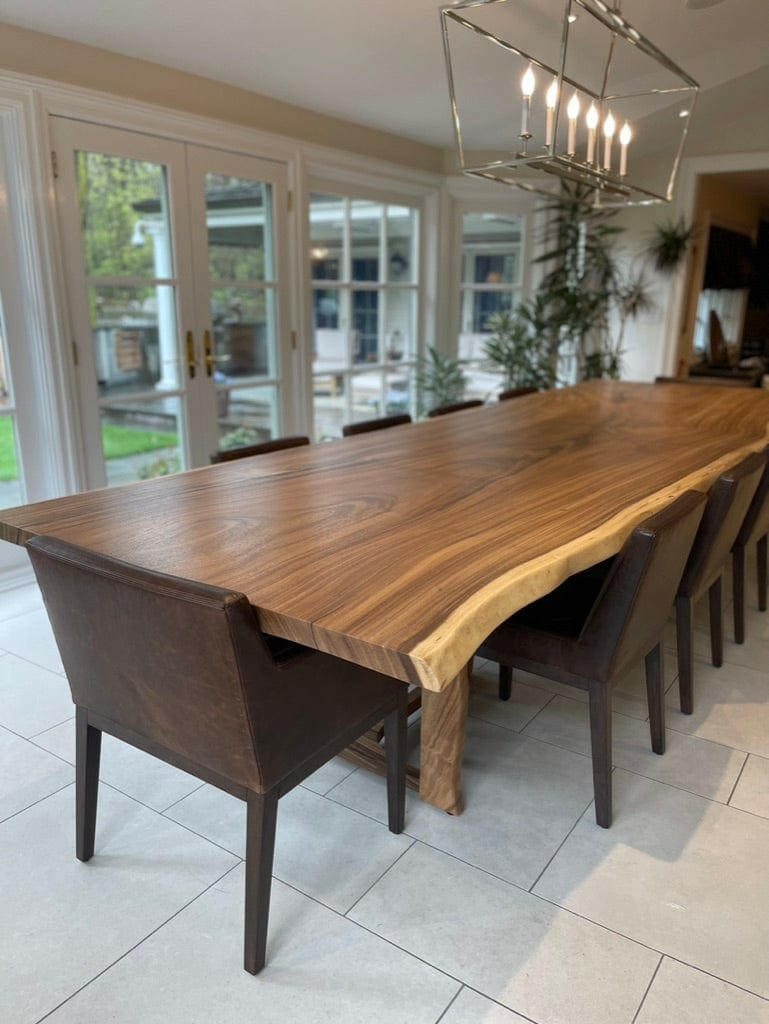A Thorough Take A Look At Table Leg Styles: Discovering the Ideal Suit
Choosing the best dining table leg design is vital for both aesthetic appeal and sensible capability. Conventional four legs offer ageless beauty and security, while the pedestal base provides enhanced legroom and a modern appearance. For those with larger tables, trestle legs ensure tough support, whereas barrette legs present a mid-century modern ambiance with their minimalist layout. The x-shaped legs blend modern style with enhanced security. Each of these options brings one-of-a-kind benefits, making the selection greater than just an issue of preference. Check out further to uncover which style flawlessly complements your eating space and way of life.
Typical 4 Legs
Among the various types of table leg styles, the standard four-leg layout remains a timeless choice for lots of families. This timeless arrangement offers a harmonious blend of functionality and appearances, making it a perennial favorite. Four legs provide balanced support, guaranteeing the table stays steady and with the ability of bearing considerable weight. This is especially helpful for families that regularly organize big events or use their eating table for several functions, such as work or crafting.
From a visual perspective, the typical four-leg layout can be easily adjusted to various indoor designs. Whether crafted from wood, steel, or a mix of products, these legs can be intricately sculpted, streamlined and minimalistic, or anything in between. Their versatility permits them to enhance both rustic and modern setups seamlessly.
Furthermore, the uncomplicated framework of the four-leg style promotes ease of motion and positioning within a room. Unlike even more complex bases, this style lessens blockages, offering adequate legroom for diners. In summary, the typical four-leg table leg design marries enduring sophistication with useful capability, making it an astute selection for those seeking both kind and function in their eating furniture.
Stand Base
Commonly celebrated for its sophisticated and space-efficient design, the stand base is a distinguished choice to the traditional four-leg arrangement in dining table leg designs. This distinct base usually includes a single main column sustaining the tabletop, which can differ in kind, from ornately carved timber to streamlined, contemporary metal. One of the key advantages of the pedestal base is its capacity to make best use of legroom and seating flexibility. Without edge legs, diners are managed greater flexibility of activity, making it an ideal selection for round and oval tables that promote even more intimate and inclusive gatherings.
The central column itself supplies a canvas for detailed layouts and creative expressions, adding a component of aesthetic interest under the table. In recap, the stand base integrates capability with style, making it an improved and sensible option for varied dining settings.
Trestle Legs
Trestle legs supply Check Out Your URL a robust and classic structure for dining tables, identified by their horizontal cross-bracing and sturdy assistance beams. Stemming from medieval times, this layout has evolved yet maintained its important framework, making it a perennial fave in both typical and modern settings. The central trestle light beam, commonly supported by two or even more vertical blog posts, provides remarkable security, allowing for larger table sizes without the requirement for added legs.
A considerable benefit of trestle leg tables is the ample legroom they use. Unlike tables with 4 corner legs, the absence of obstructions at the table's sides offers unobstructed room for chairs and diners, improving convenience and accessibility. This makes trestle tables suitable for accommodating larger useful link events, whether in an eating room or a banquet hall.
The visual versatility of trestle legs is notable. Readily available in a selection of products such as timber, metal, and composite, they can be completed to enhance a wide variety of interior designs. From rustic farmhouse to streamlined modern styles, trestle legs can be personalized to fit specific preferences. Their long-lasting appeal and functional benefits make trestle legs an engaging selection for those looking for both design and usefulness in their eating table.
Barrette Legs

The allure of hairpin legs exists in their simpleness and flexibility - dining room table legs. Readily available in a range of products, including steel and brass, they can be completed in countless colors to match various indoor styles. Whether matched with a rustic wooden table top or a contemporary glass surface, hairpin legs effortlessly blend performance with a touch of vintage beauty
Toughness is another noteworthy attribute of hairpin legs. In spite of their fragile look, these legs are crafted to bear substantial weight, making certain the table remains steady and safe. In addition, they are relatively easy to install, making them a prominent selection for DIY fanatics and specialist furnishings manufacturers alike.
X-Shaped Legs

Constructed from materials such as steel, wood, or a mix of both, X-shaped legs can be tailored to match different style choices. Steel legs often provide a smooth and commercial feeling, suitable for loft-style houses and modern-day eating spaces.
Furthermore, the engineering behind X-shaped legs makes sure also weight circulation, minimizing the risk of wobbling and improving toughness. This makes them specifically fit for bigger dining tables that require additional support. Essentially, X-shaped legs blend useful engineering with modern-day visual appeals, making them a timeless option for diverse dining atmospheres.
Final Thought
A detailed understanding of dining table leg styles reveals the distinct characteristics and benefits of each layout. look at these guys Traditional 4 legs supply security and classic allure, while stand bases supply legroom and a streamlined appearance. Trestle legs ensure durable support for bigger tables, and hairpin legs introduce a mid-century contemporary visual. X-shaped legs integrate contemporary design with enhanced security. Choosing the proper leg style ensures both useful and visual contentment in any kind of eating space.